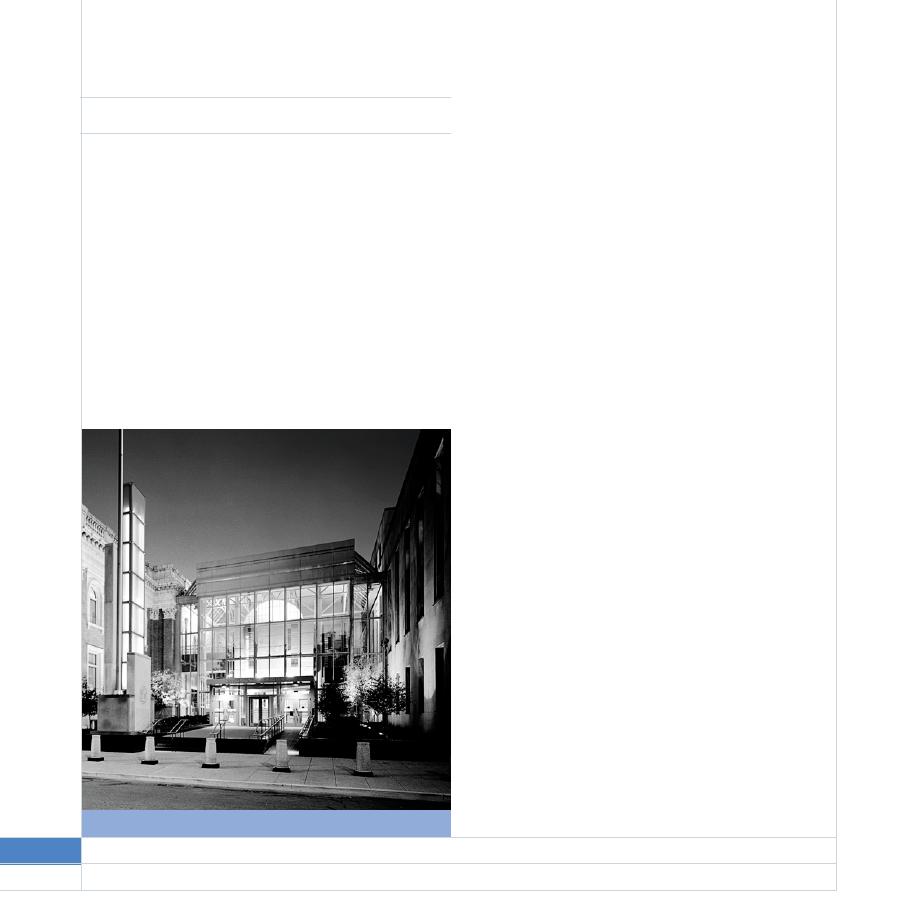
6.9 Exterior Lighting
Architectural Lighting. Architectural lighting is
considered to be any lighting that illuminates the
and Control Systems
architectural building form, and is typically uplighting
from the ground with minimum use of downlighting
from the building to minimize light pollution. The
following guidelines must be met.
Exterior Lighting Design Criteria
For stone and masonry:
An exterior lighting system shall be provided to ensure
Total architectural lighting connected wattage must not
the security and safety of the occupants and passersby,
be more than 0.125 W/sq. ft. of exterior surface area.
as well as to support the architectural aesthetic of the
No uplighting fixture shall use a higher rated lamp than
building. The properly designed exterior lighting system
250W.
must provide the minimum required illumination while
simultaneously preventing light pollution and light
All light from uplighting fixtures must be directed onto the
trespass, minimizing glare, and avoiding over lighting.
building. No light can trespass around the architectural
Exterior luminaries must comply with all local zoning
form.
laws and lighting levels for exterior spaces must be as
For metal or glass curtainwall:
indicated by the IES Lighting Handbook.
Total architectural lighting connected wattage must not be
more than 0.100 W/sq. ft. of exterior surface area.
No uplighting fixture shall use a higher rated lamp than
175W.
All light from uplighting fixtures must be directed onto the
building. No light can trespass around the architectural
form.
Site Lighting. Site lighting is considered any exterior
lighting that illuminates the area around the building,
defines entrances and exits, or provides traffic flow. Site
lighting must adhere to the following guidelines.
Luminaires selected must have a minimum cutoff of 80.
Illumination shall be well controlled and no light can
trespass off the building property.
Implement bollards for pathway illumination.
U.S. Courthouse, Erie, Pennsylvania
196 F A C I L I T I E S S T A N D A R D S
FOR THE
PUBLIC
BUILDINGS
SERVICE
6.9 Exterior Lighting and Control Systems
Revised March 2005 PBS-P100


 Previous Page
Previous Page
